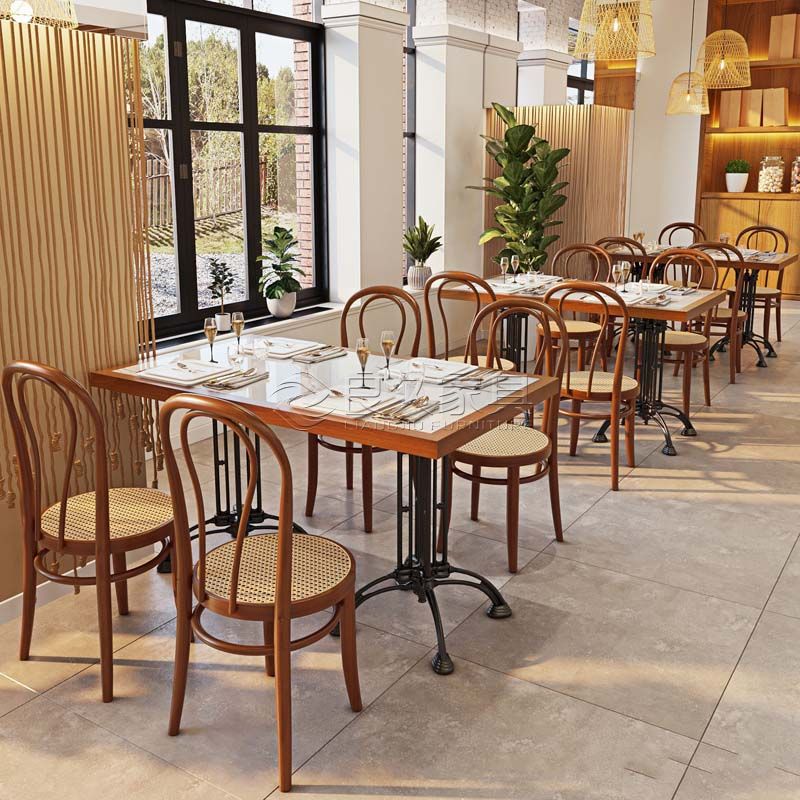餐饮行业的快速增长是中国扩大内需的重要驱动力。根据国家统计局发布的数据,2019年中国社会消费品零售总额为41.2万亿元,其中餐饮业总额为4.67万亿元,占总社会消费品零售总额的约11.3%。自2015年以来,餐饮业在零售总额中的占比持续上升。

I. 国民经济中餐饮业的地位和发展趋势 餐饮业作为国民经济的重要组成部分,其快速发展是扩大内需的重要动力。根据国家统计局发布的数据,2019年中国社会消费品零售总额为41.2万亿元,其中餐饮业零售额为4.67万亿元,占社会消费品零售总额的约11.3%。自2015年以来,餐饮行业继续增加其在零
2019年社会消费品零售总额增速8.0%,餐饮收入增速9.4%,消费对GDP增长贡献率57.8%,拉动GDP增长约3.5个百分点,连续6年成为经济增长的“三驾马车”之首,餐饮业占社会消费品零售总额的比重约为11.3%,拉动GDP增长约0.4个百分点。
中國的餐饮業由中小企業主導,連鎖度和市場集中度均低。中國烹飪協會的數據顯示,2018年全國有超過800萬家餐飲商家。根據2019年第一季度的美团研究院調查數據,86.5%的餐饮商家為個體店,82.5%的餐饮商家營業面積少於100平方米,95.9%的餐饮商家員工人數少於10人。由於中小餐馆数量眾多,市場集中度不高,行業規模效應不明顯。隨著行業競爭日趨激烈,餐饮業的中小企業將面臨單店客戶獲取能力不足、線上平台利用率低、運營資金緊張等問題。
COVID-19对餐饮业的影响 新冠肺炎疫情在春节假期和2月份造成了约90%的餐饮业商业损失。我们估计,如果没有新冠疫情的影响,2020年春节黄金周的餐饮收入约为1240亿元,但实际上可能减少了约90%。2月份的餐饮收入预计也将比去年同期减少90%,预计3月份之后将逐渐改善。年度餐饮收入预计为3.97万亿元,比2019年下降了约15%。
餐饮企业面临持续的成本压力。在疫情面前,一方面大部分餐饮企业被迫停业,另一方面还要支付房租、人工成本,同时还面临着固定资产折旧的问题。根据市场调研数据和上市餐饮企业的财务数据,原材料、人工、租金三项成本合计约占总成本的70%(图5)。其次,防疫物资采购成本大幅上升。受疫情影响,餐饮行业将购买口罩、消毒液、测温仪等防疫物资,以满足防疫安全要求,这大大增加了餐饮企业的支出。
Catering companies are facing huge funding problems. Under the dual impact of increasing spending and reducing revenue, although catering companies have turned to online business and increased sales through take-out platforms or private domain traffic channels to solve the business dilemma brought by the closure, some small and medium catering companies will find it difficult to continue due to cash flow Forced to close or close. Leading companies in the industry are also facing greater cash flow pressures. Under the circumstances of obtaining bank credit or external capital injection, they may still be forced to take measures such as salary reductions, store closures, and layoffs. The catering industry supply chain has been hit. From the perspective of the industrial chain, the upstream of the catering industry is a food supplier, the midstream is a supply chain enterprise (self-built supply chain system or by means of a platform-based supply chain enterprise), and the downstream is a store of various catering enterprises. Due to the current delay in resuming work in the upper and middle reaches, the production capacity of related companies after the Spring Festival has not been fully restored, and the farmer's market channels have not been fully connected. Feed transportation, food production and product transportation have been affected to varying degrees. The upstream and downstream supply chains are blocked, the consumer demand is reduced, and the industry is delayed to resume work, which means that the catering industry supply chain has been hit. Three trends for the future development of the catering industry 1. The shift from offline dining to online promotes the rapid and diversified development of the takeaway industry. The new crown pneumonia epidemic caused great losses to the catering industry at the end of January and February. Although catering is an important service consumption mode in the long-term trend, eating out will have a weak growth in the short to medium term. After the epidemic, the restaurant industry will be reshuffled, and the industry concentration will increase. At the same time, the market for online food ordering will see explosive growth In terms of takeaway food, in addition to manufactured products, the demand for semi-manufactured products will also increase, driving the rapid and diversified development of the takeaway industry. 2. The proportion of unmanned catering services will further increase. In view of the increase in the risk of new coronary pneumonia due to human contact, some unmanned and non-contact catering services will be accelerated, including the unmanned (no waiter) restaurant concept: customers enter the restaurant, scan the order with their mobile phones to pay for meals, After finishing the catering, the robot will deliver the meal. The customer does not contact the waiter during the whole process. 3. Meals are reduced in density, higher requirements are placed on venues, sanitation and ventilation systems, and catering costs increase. Considering that the probability of the new crown pneumonia epidemic spreading in confined spaces is greater, the catering business of catering companies will face higher requirements, including lowering customer density, upgrading sanitation and disinfection, and strengthening ventilation measures. These will increase the cost of catering operations to a certain extent. For those catering companies that have made adaptive adjustments in advance, the catering market will be able to obtain relatively obvious competitive advantages after the epidemic has subsided. 4. Restrictions on wild food products have increased, and the standardization and supervision of the food industry will be significantly strengthened. Due to the large variety of wildlife in China, many wild animals were not included before the "National People's Congress Standing Committee's Decision on the Comprehensive Ban on Illegal Wildlife Trade, Elimination of Wild Animal Habits, and Effective Protection of People's Health and Safety" The scope of management is a major difficulty in law enforcement. With the release of the "Decision", various departments will adjust and improve the relevant catalogues and supporting regulations to further clarify the scope of fasting. At the same time, law enforcement agencies will carry out special crackdown actions, resolutely ban illegal wildlife markets, and effectively increase crackdown on wildlife-related crimes. Under the guidance and supervision of the government, the standardization of the food industry will further increase.

